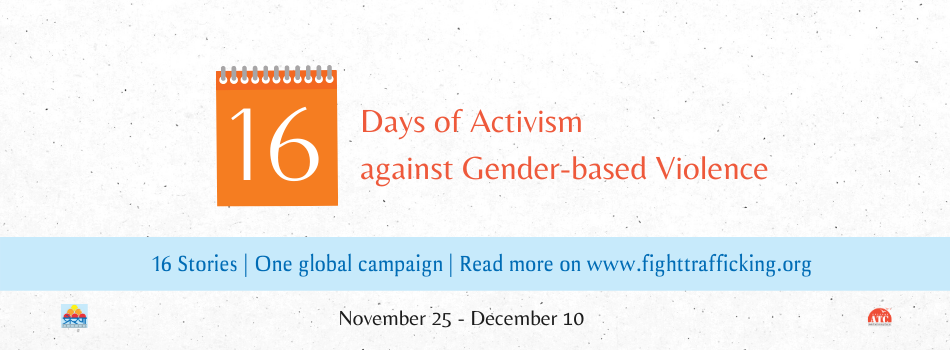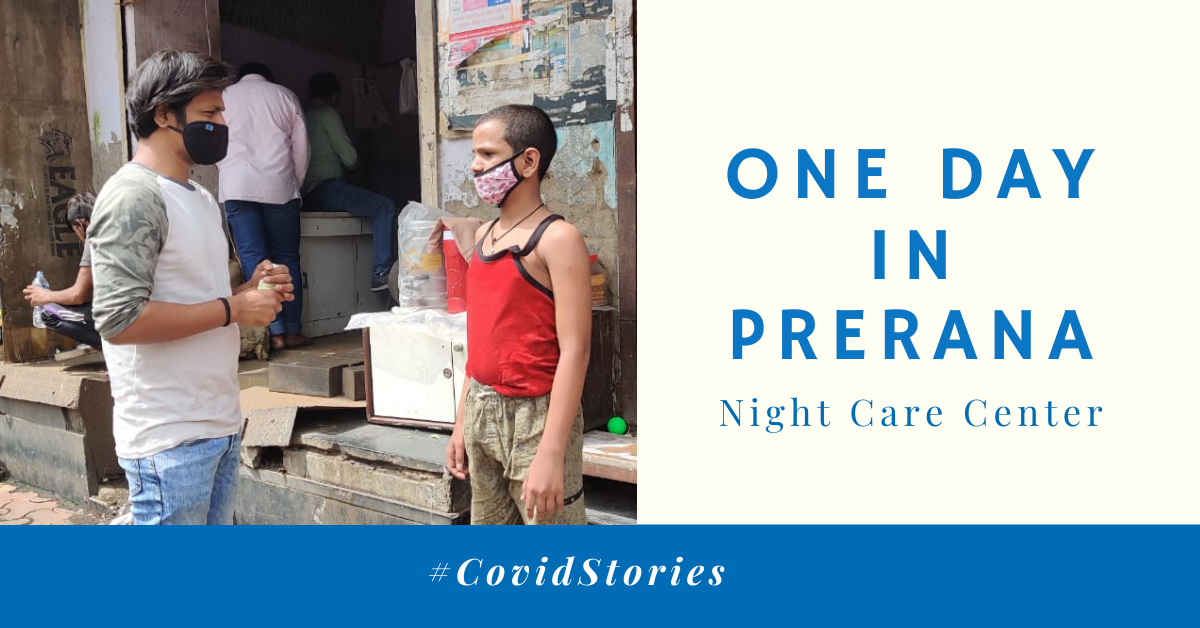
Day 7: Raising the age of marriage - A Counterproductive Proposal
Priti Patkar
Co-founder, and Executive Secretary, Prerana
16 Days of Activism against Gender-Based Violence is an annual international campaign that runs from 25th November, the International Day for the Elimination of Violence against Women, till 10 December, Human Rights Day. As part of Prerana’s campaign under 16 Days of Activism, this year we are focusing on understanding domestic violence in the context of victims of sexual violence.
Over the past 4 years, I have been working closely with many adolescents (all between the ages of 16 and 18 years). Many of them had run away from their homes, primarily due to irreconcilable differences between them, and their parents. Many of them left from situations of despair to hope. When the police would trace them, their first response to the police would be that they did not want to go back to their families. They would then be produced before the Child Welfare Committees (CWC, the competent authority under the Juvenile Justice (Care and Protection of Children) Act 2015), and later by their Order, admitted into a Children’s Home.
During their interaction with the caseworkers, most of these girls would narrate the following – that her family was planning to get them married to someone the girl did not approve of, that she had chosen her partner, and their family was against her choice. In one case, the girl was very keen to study further but her parents wanted to marry her off as the elder sister was getting married. The family wanted to get her married as well, to save money which would be incurred by arranging two different wedding ceremonies. In another case, the family came to know that the girl was talking with a male friend on WhatsApp, and decided to get her married ‘before some ‘immoral’ incident took place’. They were more concerned about the ‘honor’ of the family than understanding what their child wanted.
Impact of COVID-19
The situation brought about by the pandemic has also caused many parents to consider child marriages. In a recent case during the COVID-19 induced lockdown, 15-year-old Varsha (name changed) called us, saying that her family was planning to get her married to a man who was 10 years older than her. This person was supposed to be a prospective groom for Varsha’s older sister. However, when he visited the family, he saw Varsha and liked her instead. Fearing ostracization by their community, the parents agreed. In another case, 17-year-old Jeena’s (name changed) father wants to get her married because of the uncertainty brought about by the pandemic. “I want to fulfill my responsibility of marrying my daughter, while I am alive. Who would marry her off if COVID-19 kills me?” he asks. Meera (name changed) is a single parent. She is HIV positive and her health has been deteriorating by the day. Since the lockdown, Meera has been struggling to make ends meet. Like Varsha’s father, she wants to get her 17-year-old daughter, Neena (name changed), married before something happens to her. Neena wanted to study further and reached out for help. She was referred to us. Since then we have been working with both the mother and the child to ensure that Neena can pursue her education.
It is important to acknowledge the link between low-income households and child or early marriages. The increase in child marriages amid the pandemic is also due to many families feeling that there would be ‘one less mouth to feed’ during the current economic crisis. They also believe that the demand for dowry would be less if the girl is young. Other reasons that are driving parents towards child marriages have been – the stigma attached to women being unmarried, young girls being involved in ‘affairs’, eloping and bringing ‘shame’ to the family, and fears of premarital pregnancies. Parents don’t want to take risks and prefer to get their daughters married “before it is too late”. Before increasing the age of marriage, these and many more such ground realities should be taken into consideration by policymakers.
Concerns over Agency
With the increase in the age of marriage, parents might use the law to punish their adult children for exercising their agency and choosing their partner. Young men will be criminalized for sexual assault as well as kidnapping for marrying an “underage” girl/woman. Women will become even more vulnerable to parental control and backlash if they choose to marry against the wishes of their parents or elope. Adolescents and young women may not be able to raise their concerns, or get information and help with reproductive care. They may also not be able to access health care facilities with the fear of their partner and family being criminalized, making them more vulnerable to exploitation and ill health. We must consider the high possibility of unwanted pregnancies, illegal and hence dangerous abortions including those which lead to mortality and consequent infertility. Today, we are already seeing this with the way the POCSO Act of 2012, is misused by parents to teach their daughters a lesson for exercising their choices. Our police system is also quite enthusiastic in cases of elopement and consensual sex, as compared to taking action when cases of forced child marriages are reported.
Another factor that policymakers should consider is the vulnerability to emotional and physical abuse in families. Our on-ground experiences have also shown that when young girls and women make choices on marriage, the older women in the house, particularly, the mother, also face a backlash very often in the form of physical violence. The mother’s parenting skills are questioned and she is attacked for not being able to keep her daughter ‘in control’.With no opportunities for education, no income, the proposed increase in the age of marriage would mean that the girls and women will have to stay for more years in the family, creating a possibility of more physical and emotional abuse from the family, due to being seen as a ‘burden’. We fear that this would drive the lower strata of society to a higher resort to female foeticide. In a country where girls are considered a burden, if families have to take care of them for an extended period now, and especially guard their ‘chastity’, it would give them another reason to not have them at all.
With the required legislation existing in the country like the Prevention of Child Marriage Act, 2006, Juvenile Justice (Care and Protection of Children Act, 2015) we have not been quite successful in preventing early marriages. It is important that policymakers consider and reflect whether another legal provision of extending the minimum age for marriage would be doing any good to the existing framework and structures? Or do we need to think beyond the law and punishment framework to address a social issue that deeply affects the progress and development of young individuals in our country?
The below are some suggestions to consider before increasing the age of marriage (the list is not exhaustive)
- We presume that increasing the age of marriage will reduce the rates of maternal mortality. The incidence of maternal mortality is closely linked with the poor nutritional levels among women from the lower economic strata. A piece of legislation cannot fix this problem. To reduce the maternal mortality rate and increase nutritional levels, India has to invest in providing high-quality health care during and after pregnancy and combating malnutrition. Spending more on creating awareness of nutrition and reproductive health care and knowledge around the rights of young mothers would also be a positive step in reducing maternal mortality.
- Preventing early marriage goes much beyond creating a piece of legislation that penalizes early marriage. Young women need better avenues to invest themselves. It is important to create safe workspaces for young women, fair wages, and also establish safe working-women’s hostels. Women need to be provided a fair impetus in the form of jobs, fair wages, and safety to prevent them from being married at an early age.
- Reaching out to children is important, especially when there is absenteeism in school. There should be a focus on supporting families so that both boys and girls are in schools, at least up to the 10th standard. Basic compulsory education from age 14 to 18 years and the provision of free education to girls for lower socio-economic communities beyond 18 years must be ensured. There should also be more, decentralized, and safe educational hostels for girls.
- It is also necessary to strengthen the ICDS and ICPS program by increasing the funding for these programs, training of the staff, and conducting 3rd party evaluation to identify gaps, and suggestions for the way forward. There is a need to ensure effective implementation of Ward level and Village Level Child Protection Committees. The local elected representatives should ensure the mandate of the committee is met, and that they are answerable for the safety and development of children and adolescents in their constituency.
- Rashtriya Kishor Swasthya Karyakram (RKSK) is a progressive program but currently not accessible to some adolescents as it is conditional to take the route of the criminal justice system because of the increase in the age of consent in POCSO Act 2012.
- Effective implementation of existing laws and policies should be prioritized, over creating new ones that do not address the issue at hand and may create further challenges. The proposed law reform should be read along with other legislations like the Juvenile Justice Act 2015, POCSO Act 2012, CPCRA, IPC, The Prohibition of Child Marriage Act 2006.
- Schemes like Aadarsh Vivah Scheme in Karnataka, which incentivizes delay in marriage need to be considered while ensuring that as soon as the girl turns 18 the money received is not used as a dowry.
There is a need to be inclusive in our approach. We must work to make young girls and women part of the solution, understand their aspirations, their suggestions to achieve the goal of reducing maternal mortality, and improving nutritional levels among women. Let them suggest ways to ensure that marriage is not forced on them but is a choice they make without fear of negative consequences. There is also a need for openness in discussing issues around sexuality and reproductive health, both with boys and girls. The legal route alone is not a solution. What is needed is the allocation of resources to develop an ecosystem that supports the safety, creates negotiation opportunities, education, vocational training of girls and young adults, opportunities for them to start their enterprise, along with safe workspace options, fair wages, better provisioning for improving her nutritional status, and creating broader awareness about gender equality.
It is also important to take into consideration the fact that by and large child marriage is not a concern among the middle and higher-income groups. The curse of child marriage is related to hand-to-mouth subsistence, and the low social status of women in general in India. The Government of India in a gazette notification issued on 04th June 2020, set up a Task Force to examine matters on the age of motherhood, imperatives of lowering MMR, improvement of nutritional levels, and related issues. Such laws may rarely meet their stated goals but they certainly end up hurting only the poor and the vulnerable the most.
To be or not to be? Questions on motherhood searching answers
In February 2020, Rashmi Taylor, Prachi Naik and Flarantxa Pereira visited the Budhwar Peth red-light area. The visit was conducted Read more
A social worker from our Night Care Center shares what his day looks like through the pandemic. Reehan Mirza shares Read more



